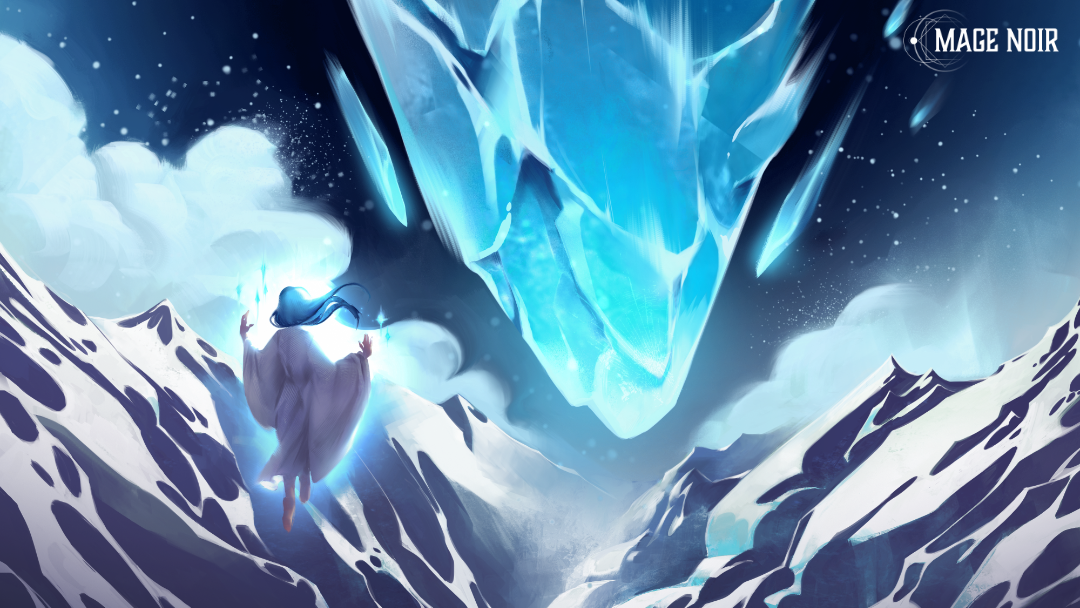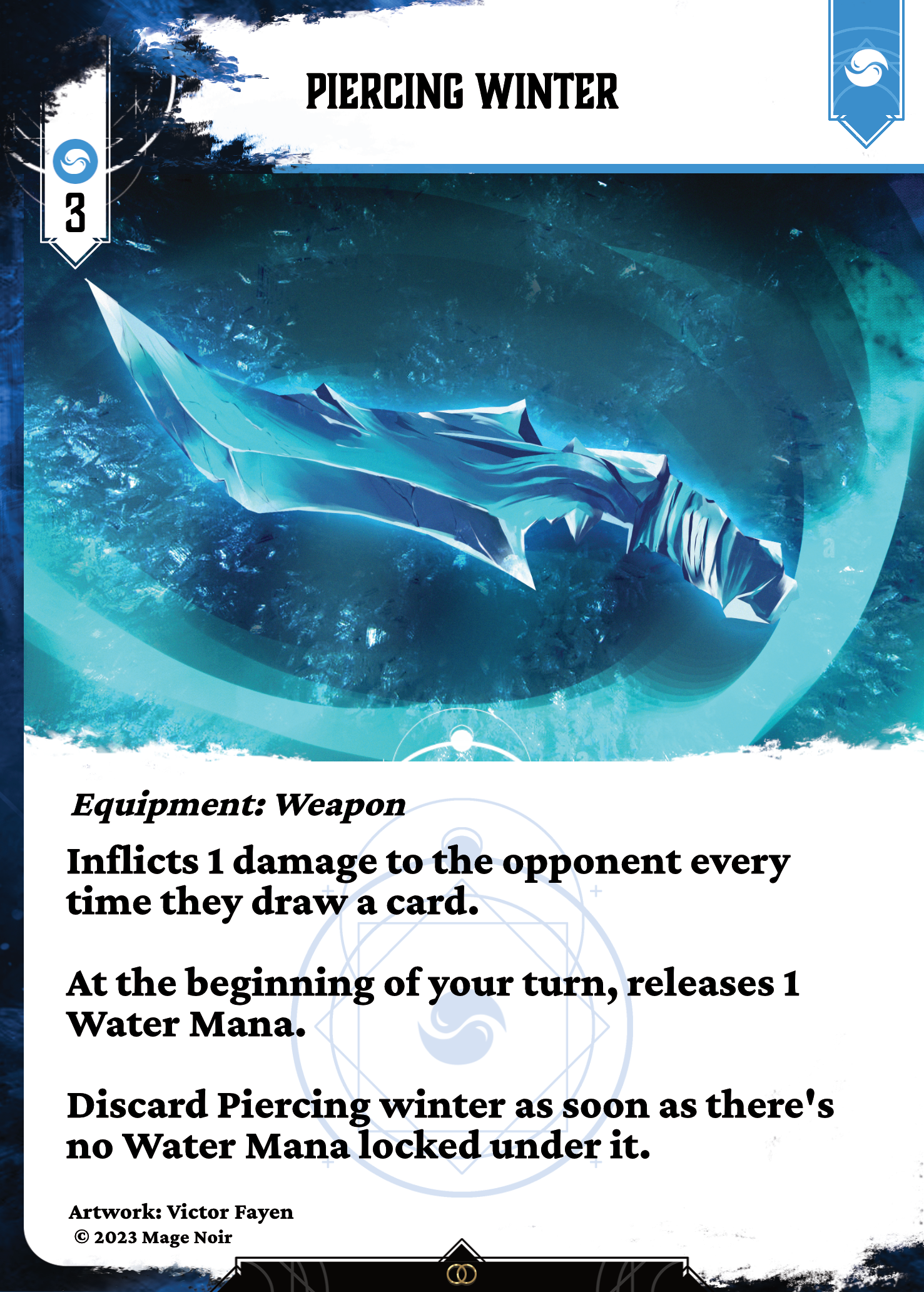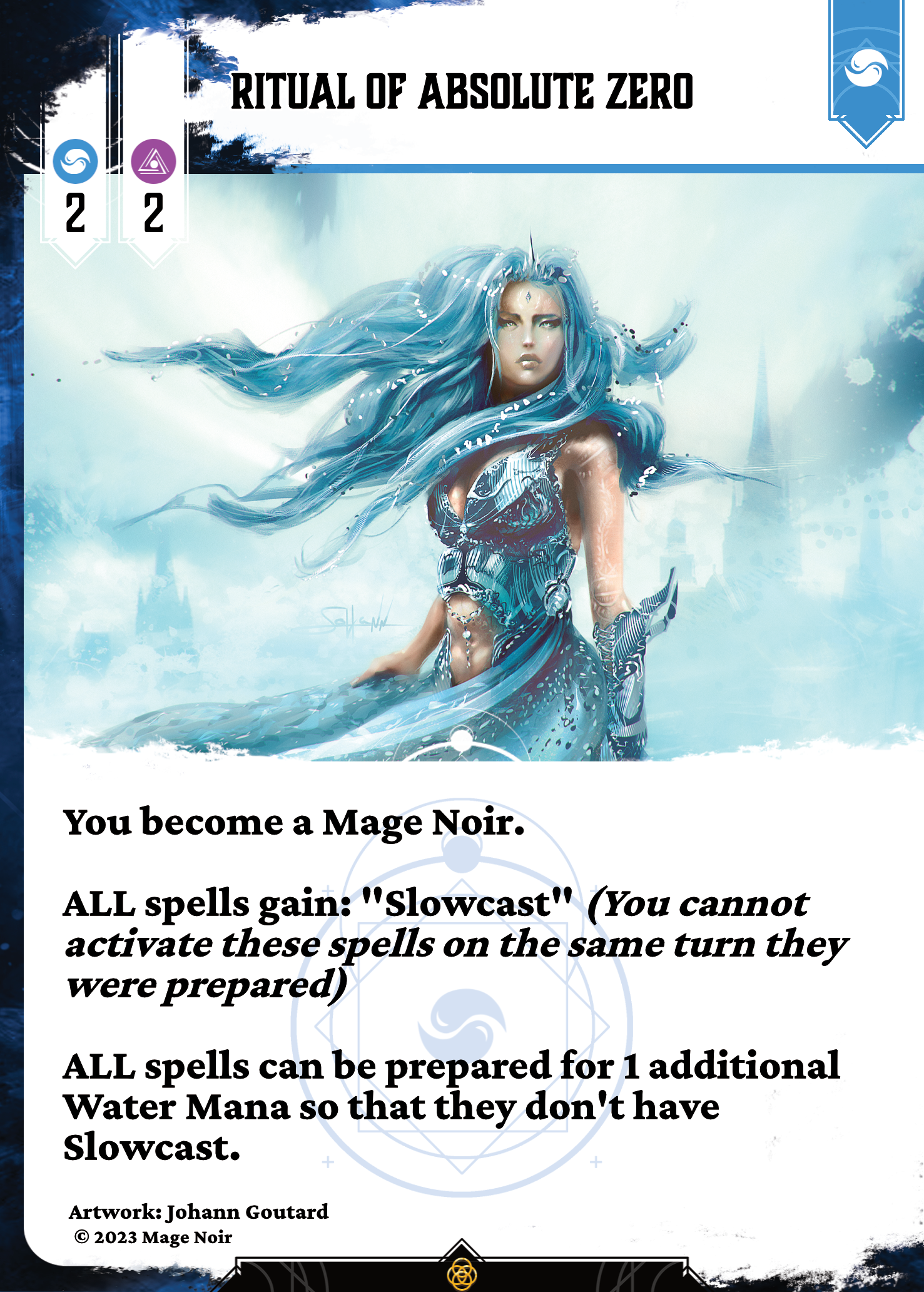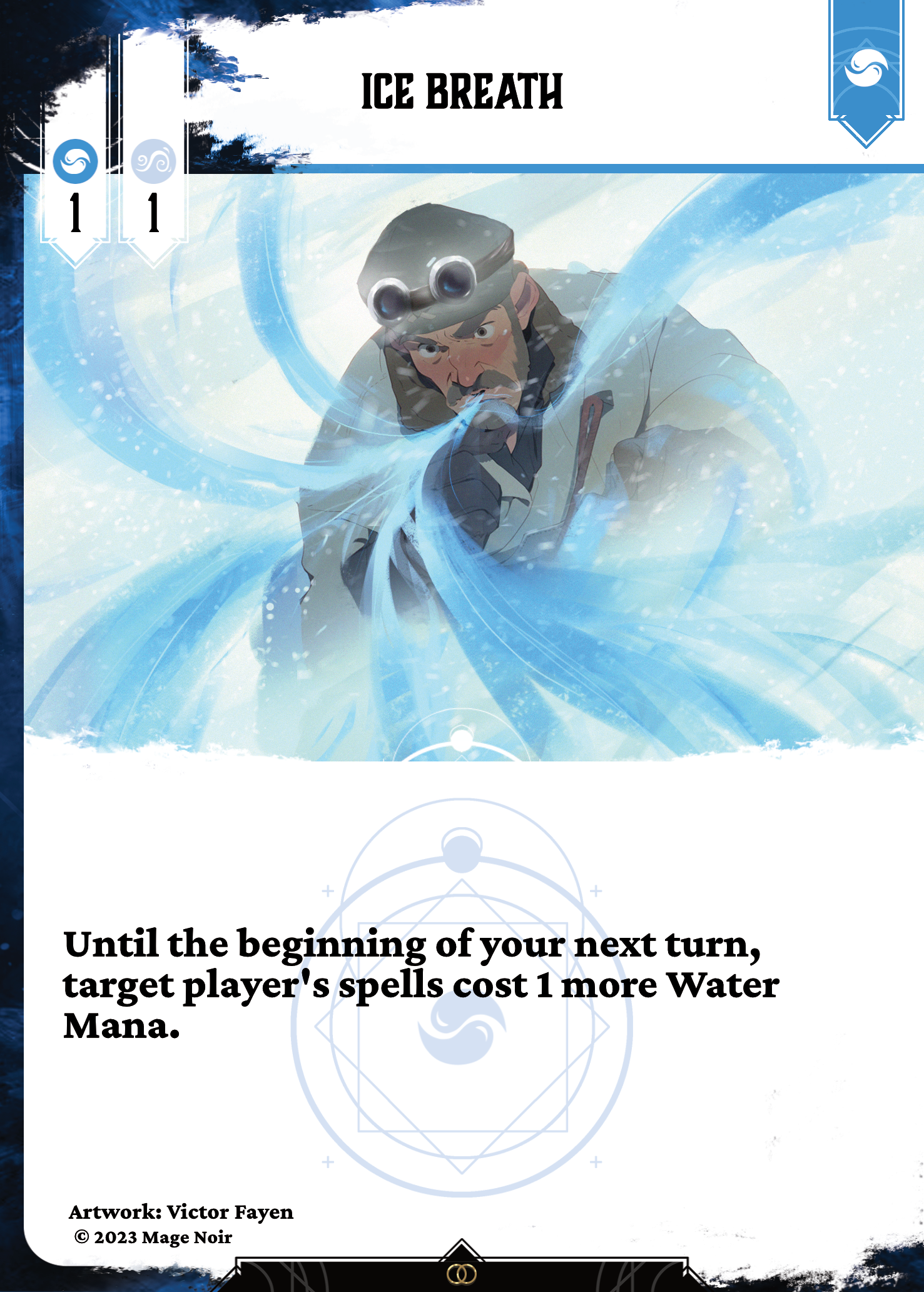Designing the Glace expansion, December 15, 2023
Hi there Mages!
You’ve been waiting for it and there it is! With days getting colder and colder, we thought it would fit the mood to talk about the Glace expansion. In case you’re wondering, Glace is the French term for Ice.
Let’s not wait any longer and let’s go.

Crystal meteor by Morgane Perrin-Roudil
Why go for ice?
Since it was designed as a versatile element, the high amount of different effects Water has in the base game, did not leave us that much design space for damaging effects. This gives Water very strong damaging spells, but only a handful of them (High pressure, Surging wave and Great waters mainly).
Used with the right setup, they represent an incredible amount of damage, but this setup-heavy playstyle does not fit everyone’s taste, making Water an element that is either loved, or kinda dismissed by some players.
To open Water up to all kinds of players, we needed a theme with a slightly more spread out approach to damages, while still keeping Water’s signature versatility.
This need, combined with the game’s need for an archetype that could control the opponent, led us naturally towards ice.It could be the numbing cold slowing you down, or deadly shards of ice piercing your opponent.
Numbing cold versus deadly ice
The lore embedded within the Glace expansion mirrors the dual nature of ice magic through two distinct characters. One side features Ernest Shackleton, a renowned adventurer and one of the first to reach the poles. On the other side stands an exiled mage, driven mad by the cold and solitude, known as the Yuki-Onna, giving life to an ancient Japanese legend.
Fueled by resentment, the Yuki-Onna relentlessly attacks Shackleton with the intent to kill, utilizing deadly shards of ice and unleashing destructive feats. Shackleton, left with no choice, employs every defensive tool at his disposal to slow her down and protect himself and his ship’s crew.
While each character embodies a specific aspect of ice’s potential, this doesn’t preclude them from occasionally employing spells from their opponent’s arsenal.
So what is Ice about?
Here are the 3 key concepts that define ice:
- Numbing
- Piercing
- Melting
Although Ice is still a part of the Water element, it should not have the same amount of versatility Water has. The key reason why Water was designed versatile is because it can take any shape depending on its container. Ice, as it is hardened by the cold, should not have this advantage. Thus, unlike in the base game, there are no Ice spells that give you a choice between multiple effects (Like Azure ring, Engulfment or Wave echo would). In a way, we could say Ice is about being a more rigid version of Water. Fortunately, this is a valid definition both from a scientific, and a game design point of view.
What we did with Ice
Melting is a weird concept to implement in a card game. It is almost a way to count how long something has been there. You could use counters that you remove periodically to tell how much something has melted. But what if you want to tell something is actually even more frozen than when it got there?
Wouldn’t it be convenient if we had a countable resource that is tied to every spell in play to determine how much cold energy they have left. Well fortunately we do.


Melting (or freezing) in Mage Noir can easily be represented by the amount of Water Mana a spell holds. Even better though, this also gives new uses to already existing spells like Tide or Condensation. It is fun to play around with, as well as easy to track down due to tangible elements the player can physically interact with.
Great, that’s one key concept taken care of, we hope they’ll all be as easy to handle as this one. What’s next? Numbing… Oh.
Numbing was much harder to handle as it implies control over you and your opponent’s actions, as well as ways to block player’s progression. This led to the creation of the “Slowcast” keyword and a very important design decision.
What do we want control to be in Mage Noir?
In some other games, there are a lot of effects or spells that prevent the opponent from taking actions (Yes we are thinking of counterspells in Magic the Gathering or hand traps in Yu-Gi-Oh). These are interesting spells, but in our opinion (and this is a personal game design philosophy) they allow for what we call “Destructive strategies”. These are strategies that count on destroying everything the opponent tries to create rather than putting your own threats on the table. In other words you decide to not lose rather than win.
We want to limit these in Mage Noir. We’d like to see both players become strong and powerful instead of spending their resources making the other one weaker. This gave us our answer to our question.
“In Mage Noir, you control the opponent by slowing them, not stopping them”.
Which is why you can usually block their advance by making spells impossible to activate, or costing more than usual, but only for a limited time.
The opponent can either wait for your slowing effect to stop, or if you can maintain it indefinitely, they can pay the additional cost to bypass it. This led to interesting slowing cards like Ice breath or Ritual of absolute zero.


Fortunately, piercing was a much simpler keyword to think about and implement. Piercing is mainly a matter of reach. It means it is going to get to you at some point. The cold is insidious and will find a way to affect you. Yuki Onna’s robe will punish your opponent’s draws with the loss of energy, Brinicle will punish your opponent’s Mana hoarding with damage and Icy infiltration will ensure they take damage whatever happens.
There are several ways for Ice to get to your enemies, some slower than others, but one will be sure to affect them.
If it’s cold, it is for both players.
The downside of the Ice though, is that despite its more rigid approach to Water’s playstyle, it is still a Water archetype, and lacks the straightforward identity some elements like Fire or Electricity have. This comes with the fact that slowing the opponent is not making the ice player faster or more efficient. While a destructive strategy prevents both players from putting their threats on the table, a softer slowing strategy is also slowing the rate at which both players are reaching their win conditions.
If your opponent finds the right way to navigate around your hindrances, they will end up outpacing you. So thread carefully and don’t forget to actually threaten your opponent if you want to come out on top.
That’s it for today Mages!
We hope that you enjoyed reading our thoughts on the Glace expansion. It really gave us food for thought and helped us strengthen our ideas of what we want Mage Noir to be so it is an expansion that is quite dear to us.
We hope you’re eager to read about the next expansion.
Until then, take care of yourselves Mages, and have fun!
~ Everyone at Double Combo Games